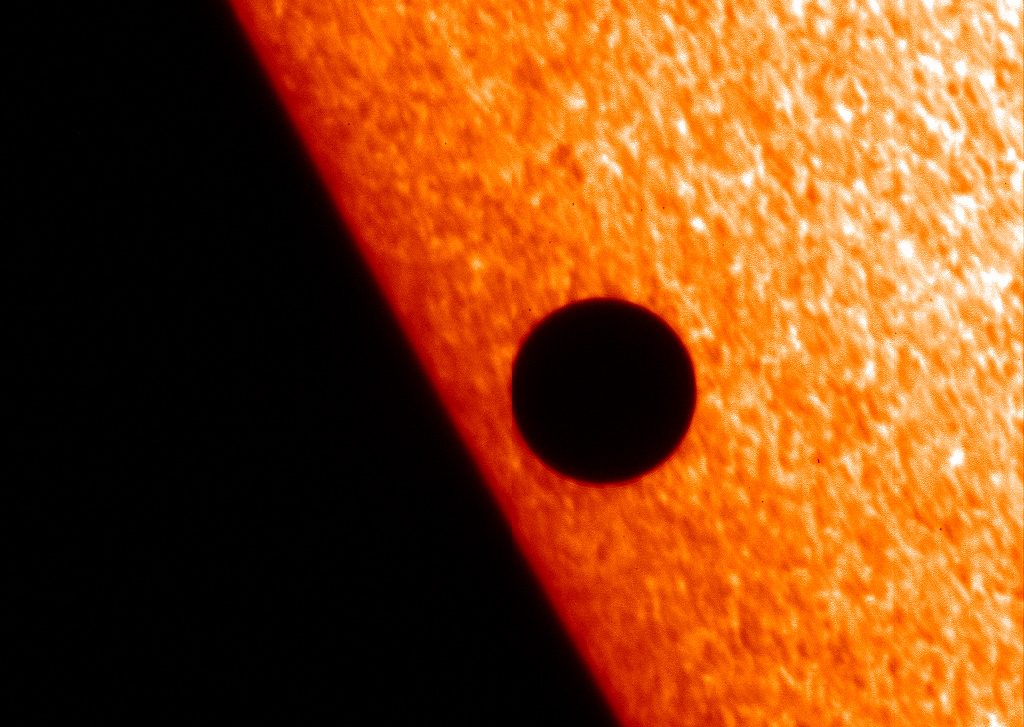[/caption]
Although the word “transit” can have many meanings, here on Universe Today, we’re talking about astronomical transits. This is where one object in space moves directly in front of another, partly obscuring it from view.
The most famous example of an astronomical transit is a solar eclipse. From our vantage point on Earth, the Moon appears to pass directly in front of the Sun, obscuring it, and darkening the sky. When seen from space, the Moon casts a shadow on the surface of the Earth; only people within that shadowed area actually see the transit.
In order to have a transit, you need to have a closer object, a more distant object, and then an observer. When all three objects are lined up in a straight line, you’ll get a transit. There can be transits of Mercury and Venus across the surface of the Sun, or a transit of Earth across the Sun, seen from Jupiter. We can also see the transit of moons across the surface of their planets. Jupiter often has moons transiting in front of it.
Astronomers use the transit technique to discover extrasolar planets orbiting other stars. When a planet passes in front of a star, it dims the light from the star slightly. And then the star brightens again as the planet moves away. By carefully measuring the brightness of the star, astronomers are able to detect if they have planets orbiting them.
Transits are also helpful for studying the atmospheres of objects in the Solar System. Astronomers discovered that Pluto has a tenuous atmosphere by studying how it dimmed the light from a more distant star. As Pluto began transiting in front of the star, its atmosphere partly obscured the star, changing the amount of light observed. Astronomers were then able to work out the chemicals in Pluto’s atmosphere.
The next transit of Mercury will occur in 2016, and the next transit of Venus is scheduled to occur in 2012.
We have written many articles about astronomical transit for Universe Today. Here’s an article about the transit of Mercury, and here’s an article about the transit of Venus.
If you’d like more info about Astronomical Transit, check out NASA Homepage, and here’s a link to NASA’s Solar System Simulator.
We’ve also recorded related episodes of Astronomy Cast about the Eclipse. Listen here, Episode 160: Eclipses.
Source: Wikipedia

